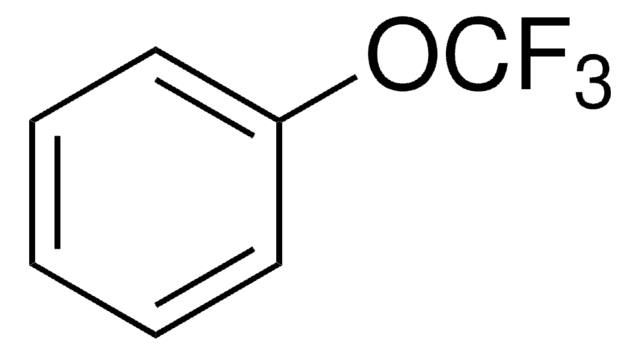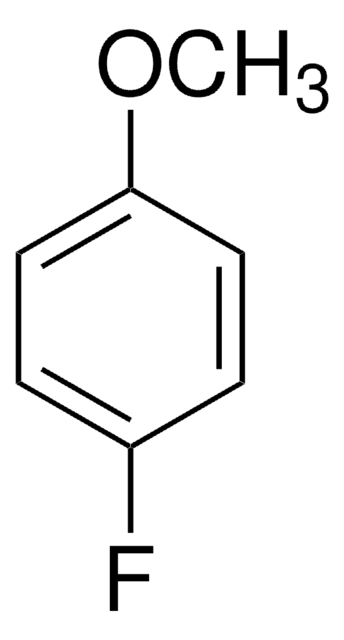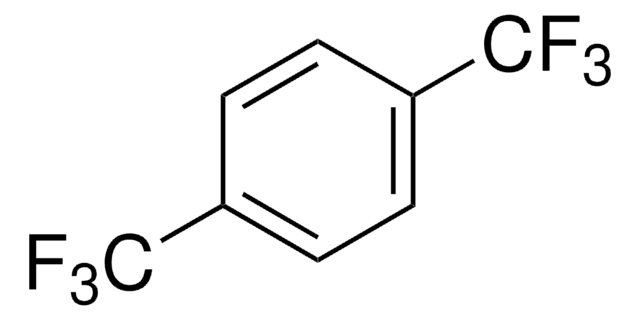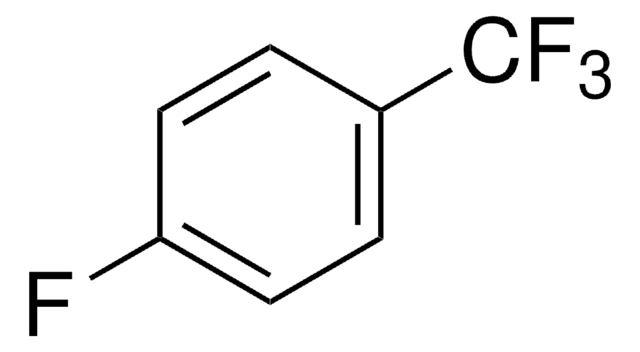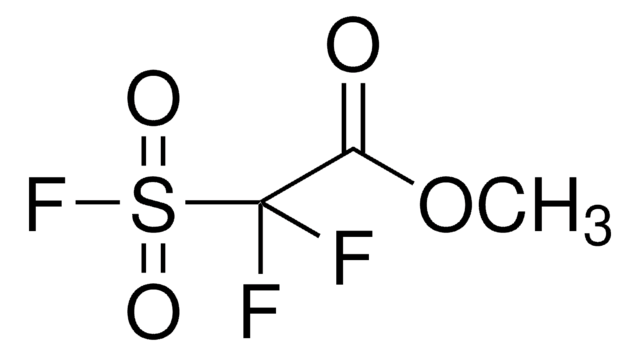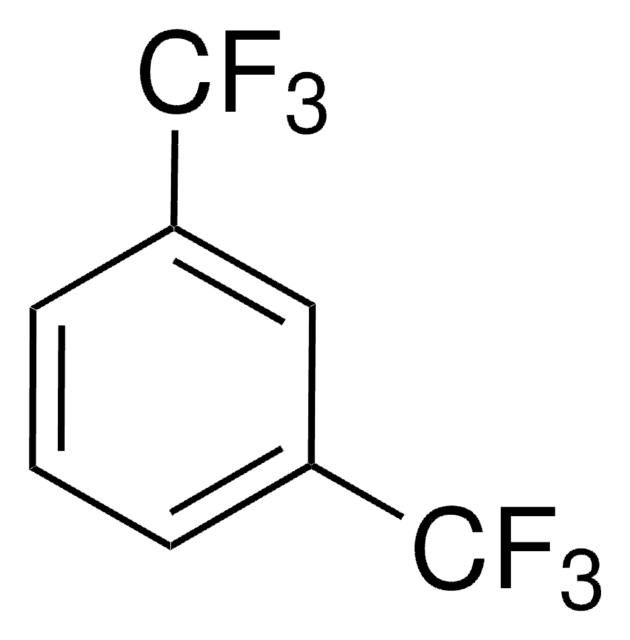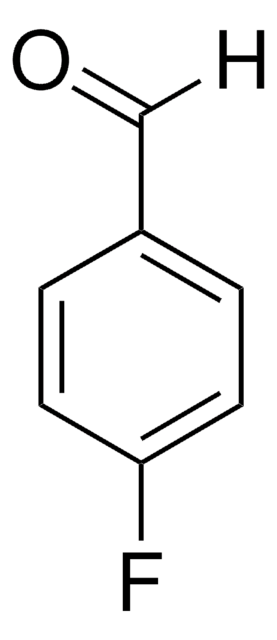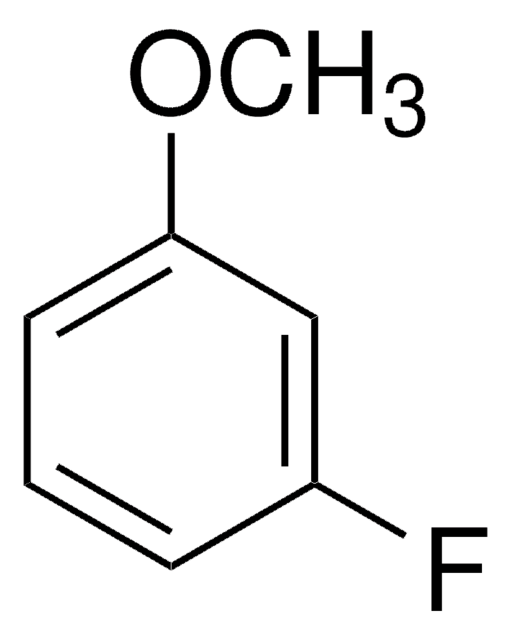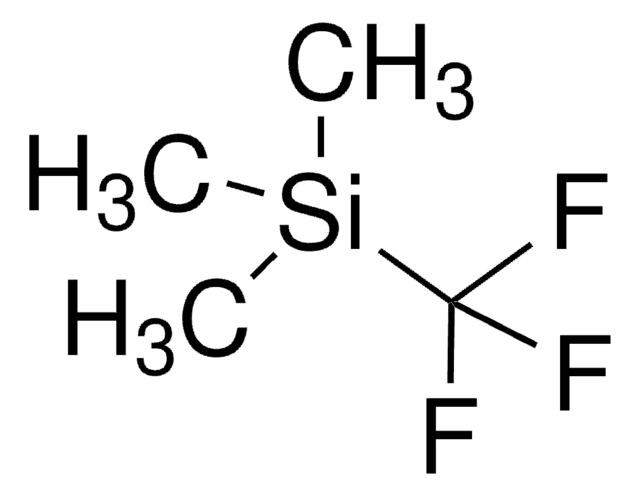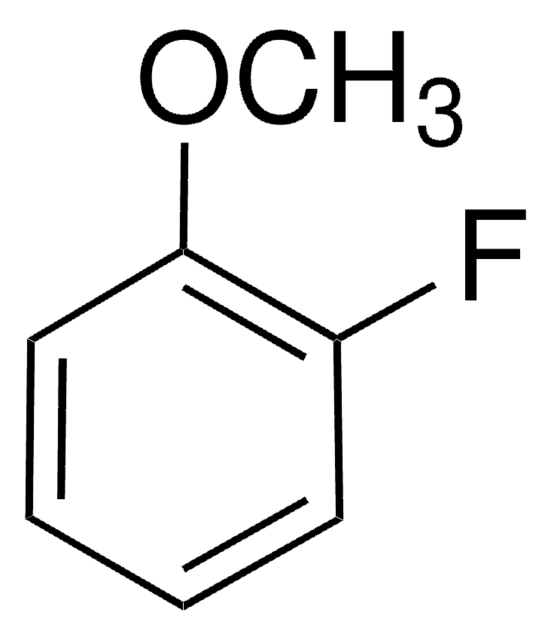All Photos(1)
About This Item
Linear Formula:
CF3OC6H4OCH3
CAS Number:
Molecular Weight:
192.14
MDL number:
UNSPSC Code:
12352100
PubChem Substance ID:
NACRES:
NA.22
Recommended Products
Assay
98%
refractive index
n20/D 1.432 (lit.)
bp
164 °C (lit.)
density
1.266 g/mL at 25 °C (lit.)
SMILES string
COc1ccc(OC(F)(F)F)cc1
InChI
1S/C8H7F3O2/c1-12-6-2-4-7(5-3-6)13-8(9,10)11/h2-5H,1H3
InChI key
NOAFZIOGGDPYKK-UHFFFAOYSA-N
General description
4-(Trifluoromethoxy)anisole can undergo metalation preferentially or exclusively at the methoxy-neighboring position.
Signal Word
Warning
Hazard Statements
Precautionary Statements
Hazard Classifications
Acute Tox. 4 Dermal - Acute Tox. 4 Inhalation - Acute Tox. 4 Oral - Eye Irrit. 2 - Flam. Liq. 3 - Skin Irrit. 2 - STOT SE 3
Target Organs
Respiratory system
Storage Class Code
3 - Flammable liquids
WGK
WGK 3
Flash Point(F)
136.4 °F - closed cup
Flash Point(C)
58 °C - closed cup
Personal Protective Equipment
dust mask type N95 (US), Eyeshields, Gloves
Regulatory Information
新产品
Choose from one of the most recent versions:
Already Own This Product?
Find documentation for the products that you have recently purchased in the Document Library.
α-Fluorinated ethers, thioethers, and amines: Anomerically biased species.
Leroux F, et al.
Chemical Reviews, 105(3), 827-856 (2005)
Frédéric R Leroux et al.
Beilstein journal of organic chemistry, 4, 13-13 (2008-10-23)
After nitrogen, fluorine is probably the next most favorite hetero-atom for incorporation into small molecules in life science-oriented research. This review focuses on a particular fluorinated substituent, the trifluoromethoxy group, which is finding increased utility as a substituent in bioactives
F Aladar Bencsath et al.
Analytical and bioanalytical chemistry, 407(14), 4079-4090 (2015-03-23)
A headspace solid-phase microextraction gas chromatography-mass spectrometry (SPME GC-MS) method is described, to screen seafood for volatile organic compounds (VOCs) associated with petrochemical taint. VOCs are extracted from the headspace of heated sample homogenates by adsorption onto a SPME fiber
Our team of scientists has experience in all areas of research including Life Science, Material Science, Chemical Synthesis, Chromatography, Analytical and many others.
Contact Technical Service